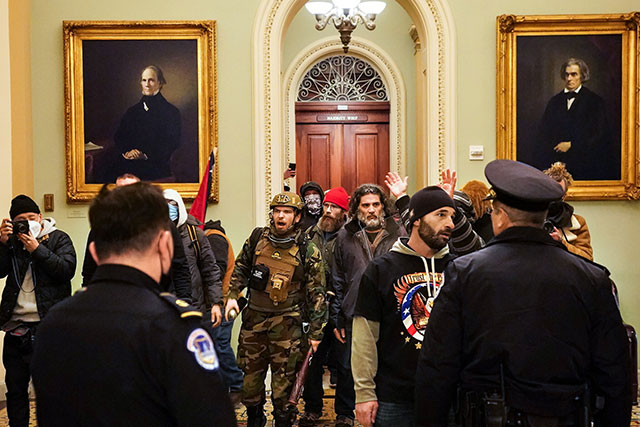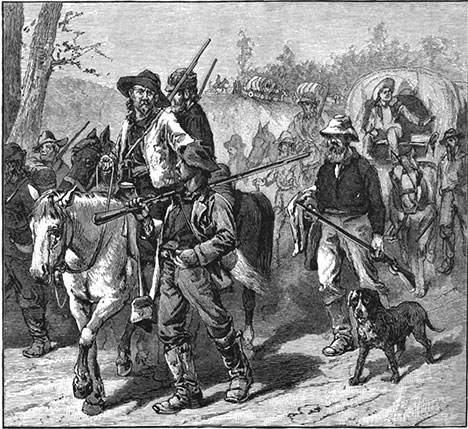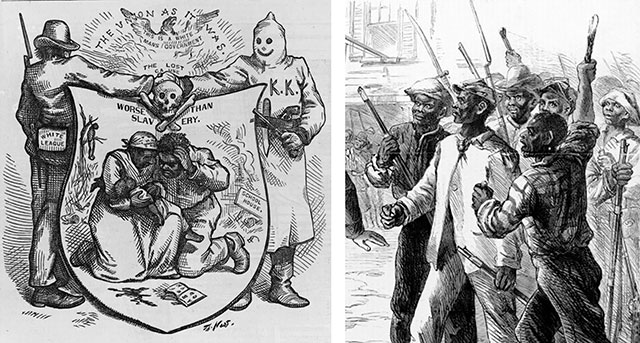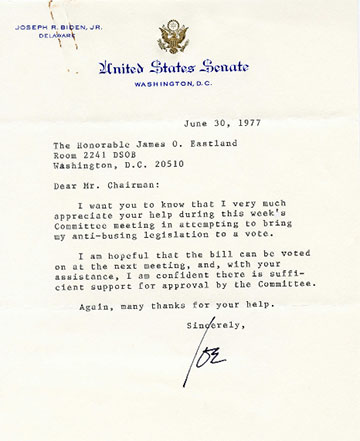
January 2021
On Trump’s “Border Ruffians”

Mob of white supremacists led by fascist thugs invades U.S. Capitol, January 6. (Erin Schaff/The New York Times)
The following is a contribution by R. Titta regarding the January 6 racist mob riot in Washington, D.C., focusing on the fascist would-be lynchers who led the storming of the U.S. Capitol.
The mob on January 6 was led by paramilitaries in camouflage fatigues, with body armor and weapons. These white racists are the recognizable descendants of the “Border Ruffians” that John Brown and his comrades confronted in the 1850s in Kansas, defeating their terror campaign to turn it into a slave state.1 The racist-mob element has regenerated itself time and again on the American political scene, dating from backlash against the earliest slave rebellions and even gathering strength as abolitionism rose as a movement. During the Civil War, in which they were defeated, the mob formed their ranks in the rebel [“Confederate”] army and especially the pro-slavery rebel guerrilla bands. We have a lot of good material on the Civil War and abolition in The Internationalist, and people should seek it out.2
 Pro-slavery “Border
Ruffians” (right) invaded Kansas from Missouri starting in
1854, terrorizing “free state” settlers. The "Ruffians" failed
in their plot to turn the territory into a slave state due to
resistance spurred by militant abolitionist John Brown. (Photo: Kansas Historical Society)
Pro-slavery “Border
Ruffians” (right) invaded Kansas from Missouri starting in
1854, terrorizing “free state” settlers. The "Ruffians" failed
in their plot to turn the territory into a slave state due to
resistance spurred by militant abolitionist John Brown. (Photo: Kansas Historical Society)After the Civil War, the mob rearmed as the Ku Klux Klan and continued its depredations right through the defeat of Reconstruction in 1877, and beyond. Despite the superiority of Northern industrial capitalism and the free labor system, the South continued to foster its own more barbarous labor system, based first of all on the super-exploitation of black labor, during the Jim Crow period. This dual labor system never completely went away. It is in the prison system and in the perpetual segregation of large numbers of black people at the bottom of the economy, and in the extreme low-wage work performed by black, brown and poor white workers as well. The system in part is enforced with race terror, supplied by the mob, but also on a massive scale by the police.
The knife point of the white power structure in the South and beyond, the mob made its way back into the halls of power after the defeat of Reconstruction. In 1956 at the beginning of the Civil Rights movement, their leaders issued a battle cry known as the “Southern Manifesto,” which called for the absolute maintenance of the Southern racist segregation system. It was signed by almost all the Southern senators and congressmen at the time.
In the aftermath of the Civil Rights movement, they lost some ground, but have always tried to regain it. Only a militant multiracial workers movement can defeat them and only a victorious workers revolution can sweep them away for good – because experience shows that the political regime and social set-up in the U.S. under capitalism recreates the racist mob over and over again. This is what Nixon did with his “Southern Strategy” to escalate racism in the Republican Party and capture the white racist vote in the South, bringing over the segregationist Democrats known as “Dixiecrats.” It is why Reagan opened his presidential campaign in 1980 by proclaiming “I believe in states’ rights,” in a speech given at Philadelphia, Mississippi, not far from the site of the KKK atrocity in which three civil rights workers were tortured to death. It is why Reagan honored Nazi SS graves in Bitburg, Germany. Not the graves of the victims of the SS, but of the SS killers themselves.

During Reconstruction, Ku Klux Klan nightriders joined with White League paramilitaries, made up of Confederate army veterans, to terrorize black people from voting. They were only stopped where armed black people, many of them Union army veterans, resisted. (Photos: Library of Congress; A.R. Waud / Harper's Weekly)
The KKK, the traditional homegrown American fascists, this depraved mob, are the vanguard of racist reaction, an adjunct to the repressive power of the American state. Akin to the violent, semi-legal posses of the American West, they have been unleashed against black and Native people and workers through history. In the 1960s and 1970s, the ultimate leaders of the KKK wore suits rather than white robes or blue uniforms. These suited racists were Biden’s close friends when he was a senator – John Stennis, James Eastland, Strom Thurmond and Jesse Helms. You can look this up; this history is not particularly hidden. With these hard-core white supremacists, Joe Biden was key to successfully leading the racist fight to defeat desegregation in the public schools. Based on this, arch-segregationist Senator James Eastland of Mississippi was instrumental in getting him onto the Senate Judiciary Committee,3 which was busy restoring U.S. citizenship to such slave-driver leaders as Robert E. Lee and Jefferson Davis. So there is a visible connection in American politics between the Confederate flag of slavery, the mob that waves it, and the segregationism-fueled career of incoming commander-in-chief Joe Biden.
 Then-senator Joe Biden
thanked arch-segregationist senator Eastland for help with
Biden’s anti-busing bill.
(Photo: Washington Post)
Then-senator Joe Biden
thanked arch-segregationist senator Eastland for help with
Biden’s anti-busing bill.
(Photo: Washington Post)Having repeatedly tried and failed to enlist active participation by the army, Trump had to rely mainly on the racist mob on January 6. He put pressure on Pence and other leading Republicans to join; some of them did, notably Ted Cruz, whose speech to overturn the election may have been a signal for the assault on the Capitol. Trump did have the support, in fact, of a majority of Republican representatives and clear connivance of the command structure of the Capitol police. But Pence and McConnell drew back from him at the last minute. And the balance of the American military and political castes, as morally degraded as these forces of imperialism and repression are, ultimately decided that Trump was unbalanced, unreliable, unsupportable and unnecessary.
That this could happen at all is a sign of the deep divisions in capitalist society and the U.S. state, whose formal civil institutions are crumbling. The ruling class’s response, as led by the incoming Democratic administration and Congress, with the support of some Republicans, will be to strengthen the military-police-prison apparatus, further ramp up repressive legislation and other measures, and gear up for their planned assault on China. But this will do nothing to reduce the internal divisions and the rot, but will further exacerbate the contradictions of the capitalist system. ■
- 1. These were gangs, well armed and equipped by the slave-drivers in Missouri and elsewhere, whipped by the violent racist rhetoric spewed by politicians of the Democratic Party (then the party of the slavocracy), and sent to invade the territory of Kansas to open it for slavery. There they terrorized Kansas settlers who had come from the East to ensure that slavery would be excluded from the Western territories. John Brown and his multiracial anti-slavery forces arrived in Kansas in 1855, and organized the settlers, whose towns had been burned and were on the brink of defeat. Under Brown’s revolutionary leadership (and with the arrival of boxes of Sharpe’s repeating rifles from Brooklyn, NY), the abolitionist free-staters struck back hard against the Border Ruffians, smashing them militarily and enabling Kansas eventually to enter the Union as a free state.
- 2. See for example, “The Emancipation Proclamation: Promise and Betrayal,” The Internationalist No. 34, March-April 2013; and “What “Post-Racial” America? Barack Obama vs. Black Liberation,” The Internationalist No. 28, March-April 2009. See also the Internationalist Group Class Readings, Marx on Slavery and the U.S. Civil War (2nd edition), April 2009.
- 3. On 30 June 1977, Biden wrote to Eastland, “I want you to know that I very much appreciate your help during this week’s Committee meeting in attempting to bring my antibusing legislation to a vote” (“Joe Biden's letters to segregationist Sen. James O. Eastland” and “Biden's past working relationship with segregationist senator James Eastland comes to the forefront,” both in Washington Post, 20 June 2019).
